Conny Waters – AncientPages.com – Underwater archaeologists conducting surveys off the coast of Salamis have found an ancient Greek building and magnificent marble treasures. According to reports, it is a large, long, and narrow building with seven rooms. The intriguing structure was partially submerged at the site of a now-sunken ancient city once home to Trojan War warrior Ajax, as told in Homer’s Iliad.
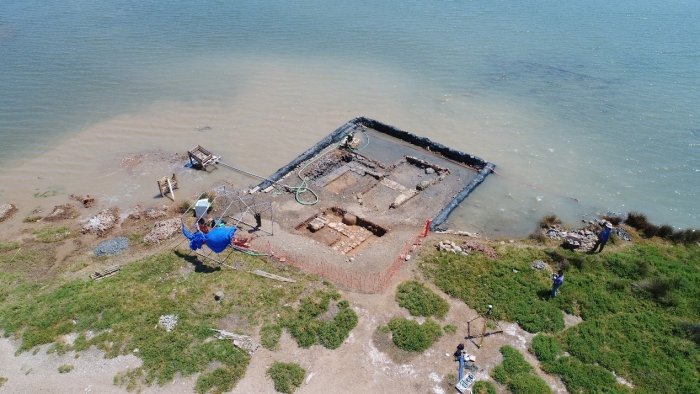
Credit: Greek Ministry of Culture – E. Kroustalis
The underwater research on the eastern shores of Salamis has been carried out for seven years. In recent years, sunken remains of the Classical city of Salamis have been systematically explored, including large sections of the sea wall, 3- 4 m., and other public constructions.
The underwater building discovered now is from the 4th century B.C., the Greek Ministry of Culture informs in a press release.
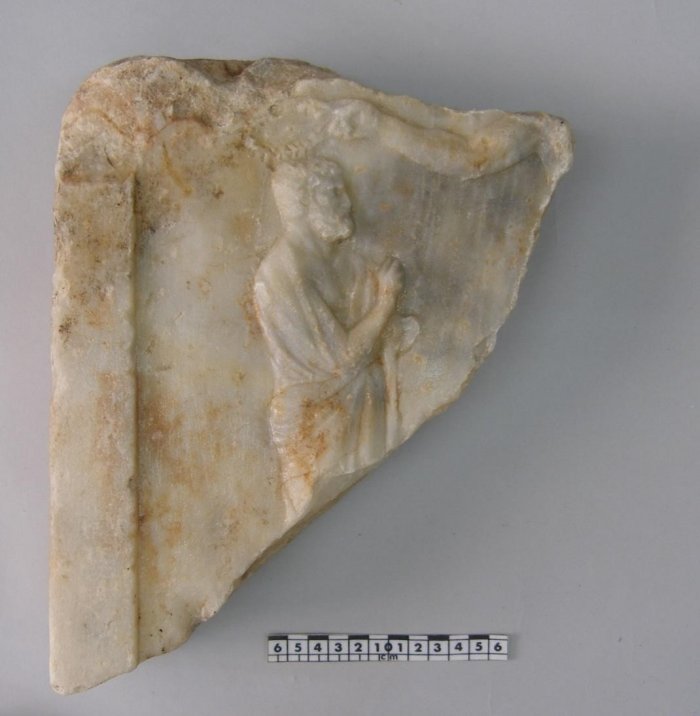
Credit: Greek Ministry of Culture – Ch. Marabea
The ancient structure has a width of about 6 meters (20 feet) and a length of 32 meters (104 feet). Inside are seven small rooms. Based on the size, shape, and arrangement of its spaces, as well as other elements, the revealed building presents all the characteristics of the lodge. One of these rooms is a storage area where the underwater team discovered several artifacts, such as vases and ceramics from the Classical-Hellenistic period. A valuable set of Athenian colored vases and shells of the Late Classical period (4th century BC) was also recovered along with many clay objects, mainly amphora, fragments of marble objects, and 22 bronze coins, Athenian and others.
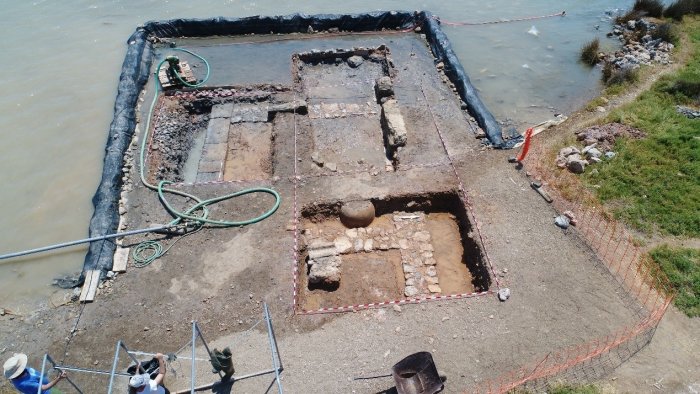
Credit: Greek Ministry of Culture – E. Kroustalis
The Greek Ministry of Culture said two of these marble fragments were of “particular importance.” One of the objects is a Fragment of a column with part of an inscription (resolution), in 2-3 fragmentary verses. The other artifact is a relief representing the bare muscular right hand of a large figure, possibly a hero (of Aiades?), placing a crown on the head of a smaller, bearded man.
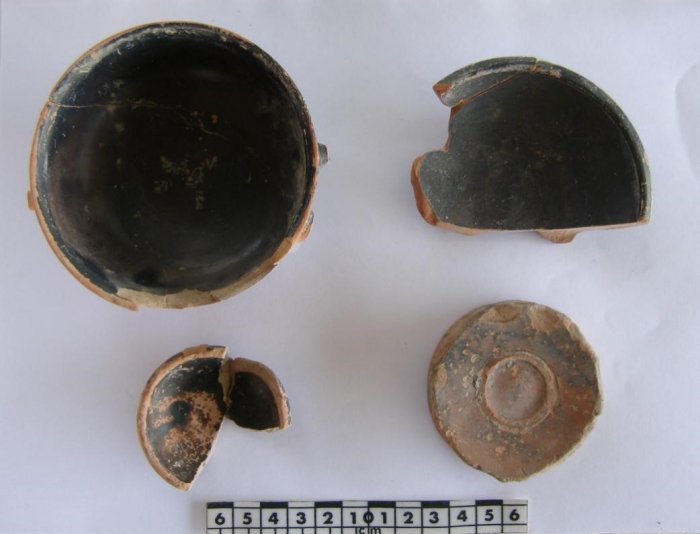
Credit: Greek Ministry of Culture – Ch. Marabea
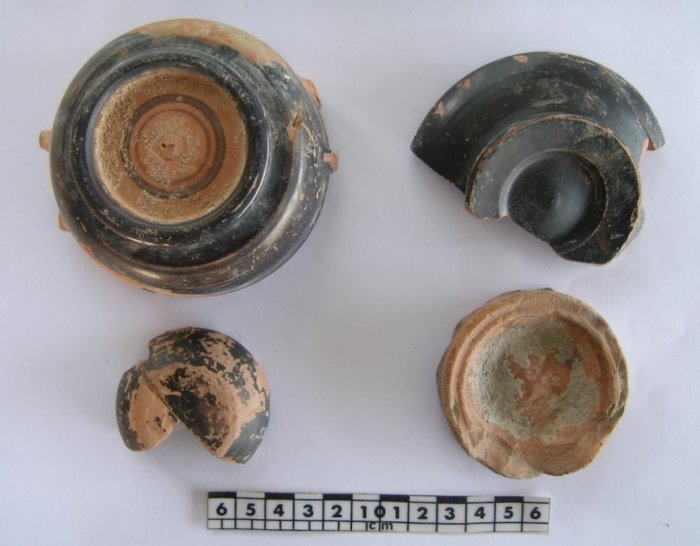
Credit: Greek Ministry of Culture – Ch. Marabea
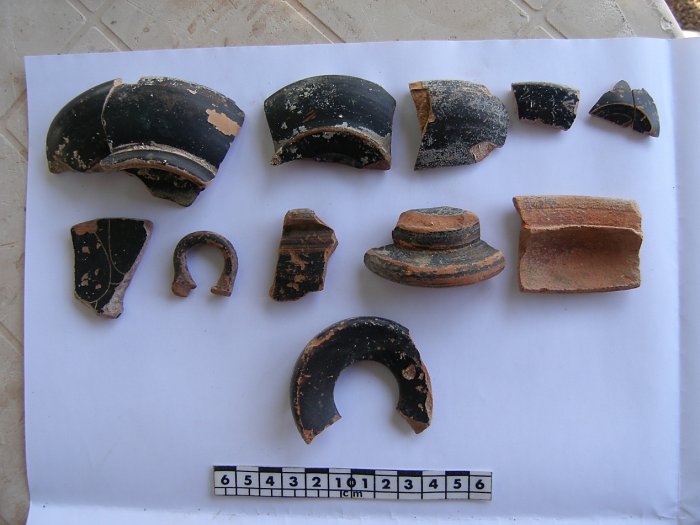
Credit: Greek Ministry of Culture – Ch. Marabea
“The scene directly refers to a corresponding relief representation on a marble stele from 320 BC. approx., in the Archaeological Museum of Salamis (MP 4228), with the hero as the main figure, in the setting of the famous teenage festival of Aianteia,” the Ministry said.
The island is well-known for the Battle of Salamis which took place on September 22, 480 B.C.
See also: More Archaeology News
In the straits at Salamis, the Greek fleet defeated much stronger and larger Persian naval forces in this battle. The island was also mentioned in Homer’s Illiad as the home of the Trojan War hero Ajax, and by the traveler Pausanias around the middle of the 2nd century. A.D.
Written by Conny Waters – AncientPages.com Staff Writer





